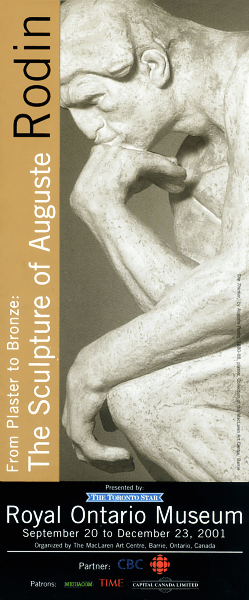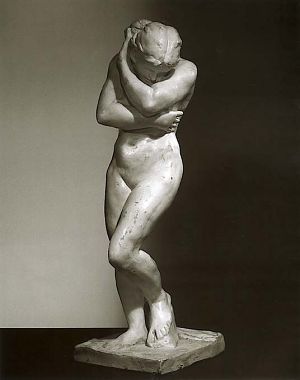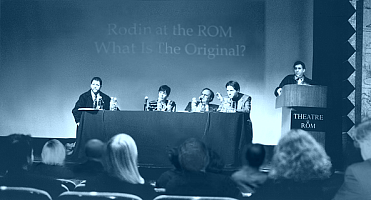Introduction to the Toronto Exhibition and Symposium |
|
|
From September 20 till December 23, 2001, the Royal Ontario Museum in Toronto showed Rodin plasters and bronzes currently being donated to the Maclaren Art Centre, Barrie, Ontario, Canado, along with other Rodin works on loan from other institutions. Because of the success of the show (134,000 visitors till the end of December), the exhibition was extended till March 17, 2002. After Toronto, the show is announced to travel to other locations in Canada and in Asia. The newly established collection will be presented by a group of Canadian donors, who themselves acquired the plasters and bronzes from an Italian-based collector, the Gruppo Mondiale Est. Most of the plasters, originating from the settlement of the George Rudier foundry, had been acquired by the Gruppo Mondiale Est in 1998 and later. Many of them are so-called foundry plasters, which have been used for casting bronze sculptures. On some of these plasters, the traces of these casting processes are still visible, so that they give an insight in the "earthy" side of Rodin´s genius and function as a historical witness of art production. This status has triggered a lively debate among Rodin scholars and institutions about the question, which kind of works can be called "original", and who should have an authority to judge the art-historical importance of single works. |
|
|
As long as Rodin´s work was protected by international copyright, solely the Musée Rodin in Paris was allowed to cast additional bronze editions. As Rodin´s official heir, the French State also claimed to have the final word on questions of authenticity. But now, more than 80 years after the artist´s death, this monopoly situation is breaking up and some institutions have developed a deviating view on the significance of the plaster works, as shown in Toronto. |
|
|
|
Already in June 2001, the RODIN-WEB took contact with the MacLaren Art Centre to learn more about the background of this donation. From this dialogue, an overview of the current debate on posthumous casting evolved, as the basis for a public Symposium on the ethical aspects of such practice and the issues of originality and authenticity. By September 2001, the MacLaren Art Center and the Royal Ontario Museum announced this Symposium would be held on November 6, 2001, in Toronto. At this meeting, Dr David Schaff, Robert Torchia, Alexandra Parigoris and Gary Arseneau ventured their views on the topics of originality, after an introduction I prepared, based on my contacts with the Musée Rodin, the Gruppo Mondiale and Maclaren staff. As could be expected, many questions could not be resolved during the course of the Toronto event, so that an intensive dialogue between the Canadians and the Symposium´s participants developed in November and December 2001. |
|
|
|
|
To read extensive essays on the questions
discussed at the Toronto Symposium, read:
|
|


 In my correspondence with Dr David Schaff, an outline
for an art-historical classification of the works was developed and
evidence regarding the precise age of the plasters formulated.
In my correspondence with Dr David Schaff, an outline
for an art-historical classification of the works was developed and
evidence regarding the precise age of the plasters formulated.